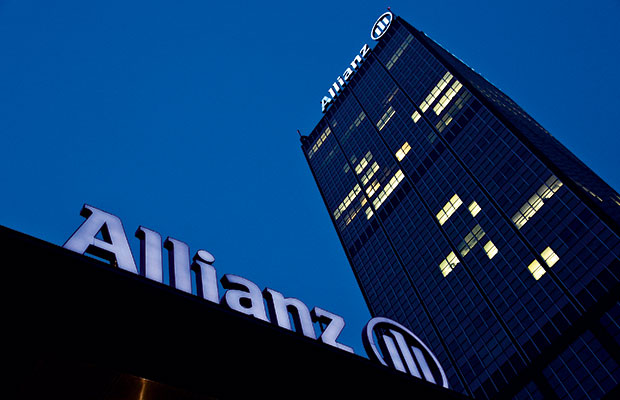
Whenever I meet board members of blue chips across the globe there is no doubt everyone is aware that attracting, retaining and motivating employees is vital to do business successfully. A few weeks ago I spoke to the CFO of one of the world’s largest machine manufacturers. “Employee satisfaction is the key to customer satisfaction,” he said. I could not agree more. It is also true in our line of business. In fact that is true for virtually every industry. In spite of the economic situation in Europe and current unemployment figures we all know that talent is the key to a sustainable future.
However, we do see an important trend. We see that simply offering competitive salaries isn’t enough to retain and attract excellent staff. The economic crisis has not gone unnoticed. People are becoming more aware how important it is to take care of themselves and their families. Not just now, but also in the long run. We see that employees prefer to work for companies who understand this. They want employers that provide more than just average benefits, especially in regard to life, disability, medical, accident and pension coverage.
In spite of the economic situation in Europe and current unemployment figures we all know that talent is the key to a sustainable future
The importance of attractive employee benefit schemes to turn the workforce into a competitive advantage is clear. But also from another perspective we see that these kind of benefits are gaining importance. Let’s take the machine manufacturer I mentioned earlier as an example. The company operates in roughly 50 countries and employs some 100,000 staff. At a country level the company spends some €10m on benefits – which is serious money, but on a global scale not a huge amount. However, if we consolidate this on a corporate level, the total spending on benefits amounts to €500m. And this is the figure we need to keep in mind.
Seizing new opportunities
Companies are becoming more globally oriented. De facto most multinational corporations do not know what they spend in total on benefits across their subsidiaries worldwide. We often see that companies lack a general overview of the multiple schemes they have in place with different providers in the various geographies. As a result these companies really do not leverage their scale to their advantage. The vast amount of money they spend on benefits across operating entities calls for a closer look to see where efficiencies and cost savings can be realised. Simple administration processes and reliable global reporting ensure easy-to-use consolidated information for financial reports. Furthermore this enables companies to uncover ample opportunities to optimise cash flows and/or to improve returns on investments.
Based on our extensive experience with multinational employee benefit solutions we assisted several of our clients to actually make this inventory, with astonishing results, including average savings that can amount up to 15 percent, as well as enhanced control and information flow.
Doing the inventory many of these multinational corporations realised for the first time the many differences in the employee benefit plans that had been put in place. Of course many of these differences are related to specific local circumstances. But it also revealed that many were unnecessary and were adding costs rather than adding value.
On top of that – and this may even be more important – we noticed that going through the whole exercise created transparency. For the very first time headquarters had a rather complete overview of all their commitments to employees, as well as the insurance partners that play a vital role. With regulators becoming more attentive to compliance, such an overview is most likely to become essential.
The measures these companies have undertaken include alignment of employee benefits planning (taking into account necessary local requirements), capturing the financial benefits that come from scale and also looking at the governance structure when it comes to employee benefits.
Future benefits
It is only a few years ago that General Motors almost went into bankruptcy. The causes were all over the news. Uncontrolled cost of benefits was one of them. At some point each car that left the factories in Detroit carried about $1,400 in extra pension and healthcare costs compared with competitors. Money that could not be spent on innovation.
The General Motors case shows that multinational corporations will need to take an even broader perspective. Just like any other activity in the organisation, employee benefits should also be put in a risk-management context. Our research shows that the vast majority of multinational corporations use a systematic risk- management approach indeed; however, they do not include employee benefits yet.
Just like any other activity in the organisation, employee benefits should also be put in a risk-management context
In the European crisis we have seen that quite a few multinational companies were starting to get worried about the continuity of local pension insurers they had hired in certain Mediterranean countries. From a risk-management perspective, already an overview of employee benefits across operating entities makes it easier to monitor the inherent risk situation worldwide. A global footprint and the knowledge of local laws and legislations can reduce international compliance risk.
Placing employee benefits into a risk-management context helps companies to realise long-term business results. Employee benefits will evolve into global solutions that provide a clear overview, optimise international liabilities and cash flows and ensure liquidity and solvability to achieve a sustainable business.
Some companies are already linking risk-management to their global employee benefit schemes. Furthermore, we envision that managing employee benefit schemes will become more active, rather than the static way these schemes are currently used.
Setting a benchmark
Let me share an example of a large client. The global agreement we have with it allowed us to collect all the health data of its employees. By consolidating its health data with statistics from our operating entities we created new value for the client. Basically, it is a made-to-measure solution that provides benchmarks on health. Crucial insurance statistics such as the number of insured claim ratio and the average claim amount can be reviewed. Benchmarks include comparing a subsidiary with the company average, comparing one subsidiary with another or comparing a local subsidiary with country average. The benefit for the client is that out-of-the-ordinary behaviour can easily be identified.
Moreover, the reason behind it can be researched. In this specific case, the benchmark showed that the number of claims of one subsidiary was significantly higher than the country average. After research, the reason appeared to be that everyone quickly went to a specialist for help. To reduce the number of claims and the average claim amount the client hired an in-company doctor for small questions and was able to adapt its strategy almost in real time.
We think we are still scratching the surface. Think of what you can do with such data and how multinational companies can use it to actively manage their employee benefits as well as the costs involved. For us, multinational employee benefit schemes are all about combining employee satisfaction and long-term financial results for the employer.


